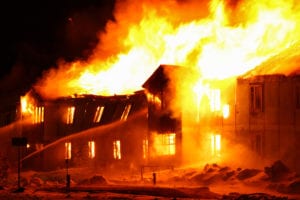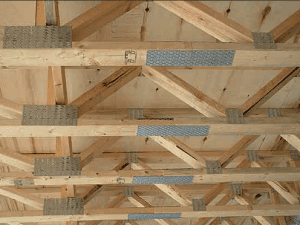 In my first responder situational awareness classes we talk about the need to predict the future. Based on the definition I use on my programs (offered by Dr. Mica Endsley), I am referring to Level 3 situational awareness – being able to project future events. This is catastrophically important to first responder safety. Many times the things that hurt and kill first responders are predictable IF you know what to look for and IF you see it in time to take appropriate action.
In my first responder situational awareness classes we talk about the need to predict the future. Based on the definition I use on my programs (offered by Dr. Mica Endsley), I am referring to Level 3 situational awareness – being able to project future events. This is catastrophically important to first responder safety. Many times the things that hurt and kill first responders are predictable IF you know what to look for and IF you see it in time to take appropriate action.
Sometimes the bad things on the horizon are obvious. Other times the clues are so subtle they can be overlooked. Taking a pessimistic view of the future can sometimes help.
Image that every time you respond to a building on fire you form a mental expectation the building is in the process of falling down. Is that a realistic assumption? You bet it is! You don’t have to study Newton’s law of universal gravitation to understand gravity is pushing down on the earth all the time and with constant force. This means, in essence, gravity is trying to make every building fall down (including the one you are sitting in right now).
 The only thing holding the building up against the force of gravity is the components of construction. Pretty simple stuff, right? The components of construction will work, as designed, for so long as they are not acted upon by an outside force (there’s a little Newtonian physics language for our nerdy scientific readers).
The only thing holding the building up against the force of gravity is the components of construction. Pretty simple stuff, right? The components of construction will work, as designed, for so long as they are not acted upon by an outside force (there’s a little Newtonian physics language for our nerdy scientific readers).
For the sake of this discussion, that outside force… is heat. Heat degrades the ability of the building components to stand up to the forces of gravity. At some point, unless action is taken to stop the degradation, the components of construction will lose the battle with gravity and the building will fall down.
Let’s tie all of this in to situational awareness. The first level of situational awareness is perception – being aware of building construction and fire conditions. The second level of situational awareness is understanding – being aware how the former is being impacted by the latter. The third level of situational awareness is prediction – being able to make accurate projections about how soon the building (or components of it) are going to lose their battle with gravity.
Rich Gasaway’s Advice
 If you look at every building on fire as if it is in the process of falling down, it can change your entire perspective about your safety. As you conduct your size up, consider what the building is made out of. This takes some training and some knowledge of building construction. There are many different types of construction and each have their benefits and detriments, most of which are a factor of strength and cost of the materials.
If you look at every building on fire as if it is in the process of falling down, it can change your entire perspective about your safety. As you conduct your size up, consider what the building is made out of. This takes some training and some knowledge of building construction. There are many different types of construction and each have their benefits and detriments, most of which are a factor of strength and cost of the materials.
Dwellings made with lightweight construction are going to lose their battle with gravity much, much sooner than dwellings made with legacy construction materials. Buildings with fire suppression systems and fire resistive construction are going to fare better than those without.
The important point I want to make in this article is: Mindset. Be of the mindset that heat is degrading the component of construction and the building you are working in is being pushed to the ground by gravity. There may be little to no warning to indicate when gravity is going to win the battle.
I am reminded of a experiment one of my kids did for school where they built a toothpick structure and then loaded weight on top of it incrementally until it collapsed. Until that last unit of weight was added there was no warning signs of impending collapse. But when the final unit of weight was added, the entire structure come smashing down. There was no warning whatsoever. And while we were expecting it… in fact trying to create it… we were still surprised with the speed it happened.
Discussion Questions
 1. Discuss the training you have received on building construction and how those lessons apply to being prepared for potential structural collapse.
1. Discuss the training you have received on building construction and how those lessons apply to being prepared for potential structural collapse.
2. Discuss how you can improve your safety by making reasonable predictions of how buildings will behave under fire conditions.
3. Discuss what you can do to ensure you will not be inside a structure fire when gravity wins and the building (or some portion of the building) falls down.
_____________________________________________________
About the Author
Richard B. Gasaway, PhD, CSP is widely considered a trusted authority on human factors, situational awareness and the high-risk decision making processes used in high-stress, high consequence work environments. He served 33 years on the front lines as a firefighter, EMT-Paramedic, company officer, training officer, fire chief and emergency incident commander. His doctoral research included the study of cognitive neuroscience to understand how human factors flaw situational awareness and impact high-risk decision making.
_____________________________________________________

If you are interested in taking your understanding of situational awareness and high-risk decision making to a higher level, check out the Situational Awareness Matters Online Academy.
CLICK HERE for details, enrollment options and pricing.
__________________________________
Share your comments on this article in the “Leave a Reply” box below. If you want to send me incident pictures, videos or have an idea you’d like me to research and write about, contact me. I really enjoy getting feedback and supportive messages from fellow first responders. It gives me the energy to work harder for you.
Let’s Get connected
Facebook: SAMatters
LinkedIn: Rich Gasaway
LinkedIn: Situational Awareness Matters
Twitter: Rich Gasaway
Youtube: SAMattersTV
itunes: SAMatters Radio
Stitcher Radio: SAMatters Radio
Google Play: SAMatters Radio
iHeart Radio: SAMatters Radio

With your permission, I would like to run this article in the next issue of the UFRA Straight Tip magazine.
Thank you,
Andrea Hossley,
Managing Editor
P 801-863-7715
E andrea.hossley@uvu.edu
Andrea,
Thank you for contacting me. You may run this, and any article from SAMatters so long as credit is given to the site and and the URL is provided for your readers.
Thank you for sharing the message forward!
Rich
Excellent message, easy to understand and convey to others. Thanks for posting.
I stumbled upon your sight while doing human factors research for aircraft mishaps, great info here! I am particularly struck by this article as my background and teaching role is in medicine. I read this and thought of ‘every patient is in the process of dying’. May seem bleak, but I think can be a useful tool in teaching my guys about predicting changes in patient status and how to be proactive rather than reactive in their care.
Sara,
Thank you for sharing your feedback with me. I am happy to hear the article will be helpful in your teaching role in medicine.
Rich